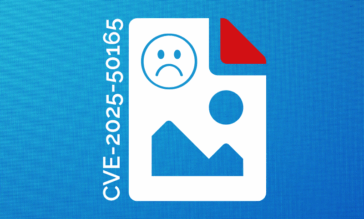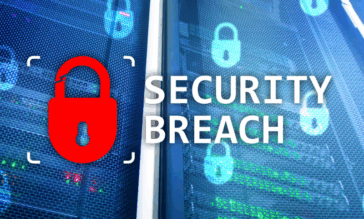How to Unify Your IT Strategy

Organizations continue to leave behind the shackles of traditional IT with their on-premises infrastructure and hardware-based servers. Cloud technologies and virtualization have allowed these growing enterprises to rapidly adopt new technologies, building out new services and solutions in weeks rather than months or years. All of this growth has allowed them to rapidly prototype and expand on a pay-as-you-go model rather than investing massively in hardware.
Now for the downside. This expansion of additional technologies has increased attack surfaces and expanded the amount of data required to track and secure it all. It is spread across multiple cloud providers, SaaS tools, mobile devices, and some still on-premises. To manage this, organizations have adopted numerous security solutions with their interfaces, which has expanded the overall complexity and complicated operations. With this in mind, we offer tips for unifying your IT strategy so that security doesn’t have to be an uphill battle.
Understanding Modern IT Complexity
The complexity of modern IT infrastructure significantly elevates security risks. Integration challenges arise as diverse systems and applications interconnect, often creating security vulnerabilities that are difficult to manage. Concurrently, the vast amounts of data generated and stored across multiple platforms exacerbate control and protection efforts, making comprehensive data management a critical concern. Moreover, the rapid pace of technological updates necessitates constant vigilance; frequent changes can lead to oversight and the introduction of gaps in security protocols, compounding the risk of potential breaches.
This dynamic environment demands a strategic approach to IT management in order to safeguard against evolving threats.
Tool Sprawl
Managing a plethora of disparate security tools can introduce significant inefficiencies and inflated costs within an organization. The operational inefficiencies stem from the need to navigate multiple platforms and interfaces, slowing down processes and hampering the ability of security teams to respond swiftly to threats. It can also lead to data silos, decreasing the visibility of the organizational security posture and further slowing down response. This increases the financial burden as overlapping functionalities between tools necessitate duplicate expenditures on licenses, updates, and support without corresponding increases in value.
Enforcing consistent security policies across such a fragmented tool landscape is challenging. Implementation inconsistencies expose the organization to vulnerabilities, as some areas may be less protected due to disparities in tool capabilities or integration issues. These gaps may be difficult to detect, especially as organizations expand their IT infrastructure, further exacerbating the problem.
Complexity in Security Operations
The proliferation of multiple security tools in an organization creates operational complexity and obscures a holistic view of the security posture. Team members end up having to navigate a myriad of interfaces before they ever find the relevant data, complicating drawing meaningful insights from disparate sources. Such fragmentation creates a myopic view of the data, leading to missed connections between data points. Analysts could easily make the connections if these data points were seen together and more rapidly detect a threat.
This complexity widens the cybersecurity skill gap. The need to manage and understand multiple specialized tools increases onboarding times and steepens the learning curve for new staff. Even for those who already understand the tools in general, there is time to understand them in the context of how the organization has implemented it. The detailed knowledge required for each tool also lengthens the recruitment process and narrows the pool of suitable candidates. Not only does this cost organizations time and money, it prevents productivity and can lead to mistakes that result in security breaches.
To recap, modern IT complexity can lead to:
- Multiple platform onboarding, education, and upkeep
- Associated fees and subscription costs for redundant solutions
- Tool and process silos resulting in misalignment
- Introduction of gaps and vulnerabilities due to oversight
- Fragmentation of data and lack of useful analysis
Unified Platform Advantages
Adopting more unified tooling can provide many benefits. A unified platform consolidates management into a single dashboard, enhancing security oversight and significantly improving response times and decision-making processes. This centralized control and simplified governance streamline compliance efforts across various tools, reducing the administrative burden.
Such platforms provide enhanced visibility into security threats and responses, facilitating proactive management and reducing the total cost of ownership by cutting down on the need for multiple licenses and maintenance agreements.
Reducing Complexity
One of the inherent benefits of unified solutions is the simplification of operations, as they simplify the management of multiple security solutions and data types. Centralizing security policies ensures consistent implementation and management across all platforms, enhancing security coherence. This consolidation also reduces the training requirements for security teams, as they need to learn only one system rather than several. Streamlined updates and maintenance reduce logistical burdens, while consolidated reporting from a single source improves the accuracy and timeliness of security analytics, enabling quicker, more informed decision-making.
How to Improve Security Without Adding Complexity
Integrating Data Detection and Response (DDR) capabilities within a unified platform significantly enhances data and endpoint security. DDR offers advanced threat detection, allowing organizations to identify and react to malware and sophisticated cyber threats in real-time. This immediate responsiveness ensures that potential breaches can be managed swiftly and effectively, safeguarding critical data integrity across all systems.
Going beyond traditional, one-off solutions such as endpoint detection and response (EDR) or data loss protection (DLP), data detection and response’s seamless integration with existing security measures boosts overall protection without disrupting ongoing operations. It also supports scalability, enabling organizations to handle increased data volumes and adapt to evolving security needs as they grow.
This adaptability is crucial for maintaining robust security in the face of a constantly evolving threat landscape, allowing organizations to stay ahead of potential threats while continuing to grow and expand.
To recap, simplifying IT with a solution like DDR enables:
- Tool consolidation for lessened costs and recurring subscriptions
- Enhanced visibility into threats and remediation tactics
- Simplification of management for better accuracy and timeliness
- Proactive cybersecurity rather than reactive “too late” solutions
- Single source of truth for better security response and posture
Implementation Considerations
When transitioning to a unified platform, several key considerations ensure a smooth integration that complements, rather than replaces, existing systems. System interoperability is crucial; the new platform should seamlessly integrate with existing tools, maintaining necessary functionalities and data flows. This integration should leverage, not discard, current technologies, focusing on customizable solutions that enhance rather than overhaul existing setups.
Making this transition is more than just flipping a switch and adopting new technology. Using a phased implementation strategy can effectively manage risks by starting with non-critical systems to refine the process and gather feedback. A well-thought-out data migration plan is essential to ensure minimal disruption and maintain data integrity. User adoption is facilitated through targeted training and clear communication about the new system’s benefits, ensuring users are comfortable and fully leveraging the new platform’s capabilities.
Future-Proofing IT Operations with Votiro
Votiro’s Zero Trust Data Detection and Response (DDR) capabilities meld security into IT operations, allowing your organization to adapt to rapidly evolving security threats and technological changes.
A Zero Trust approach to DDR protects sensitive information by employing advanced analytics to monitor data flows in real-time, ensuring that sensitive data such as personally identifiable information (PII) is identified and classified by DDR as it moves through the organization. The automated data handling and protection policies ensure it is managed according to business and regulatory standards, preventing unauthorized access and potential data breaches.
Votiro’s unified solution goes beyond data privacy and includes technology to remove malicious threats from data as it traverses organizational boundaries. It utilizes a patented, proactive Content Disarm and Reconstruction (CDR) technology combined with antivirus (AV) to preemptively eliminate known and zero-day threats that threaten data security and privacy.
Learn more about Votiro’s Zero Trust Data Detection and Response capabilities by signing up for a one-on-one demo of the platform, or try it free for 30 days and see how Votiro can unify your IT strategy without adding unnecessary complexities or tool redundancies.
News you can use
Stay up-to-date on the latest industry news and get all the insights you need to navigate the cybersecurity world like a pro. It's as easy as using that form to the right. No catch. Just click, fill, subscribe, and sit back as the information comes to you.
Sign-up Here!
Subscribe to our newsletter for real-time insights about the cybersecurity industry.



